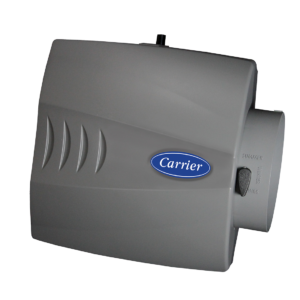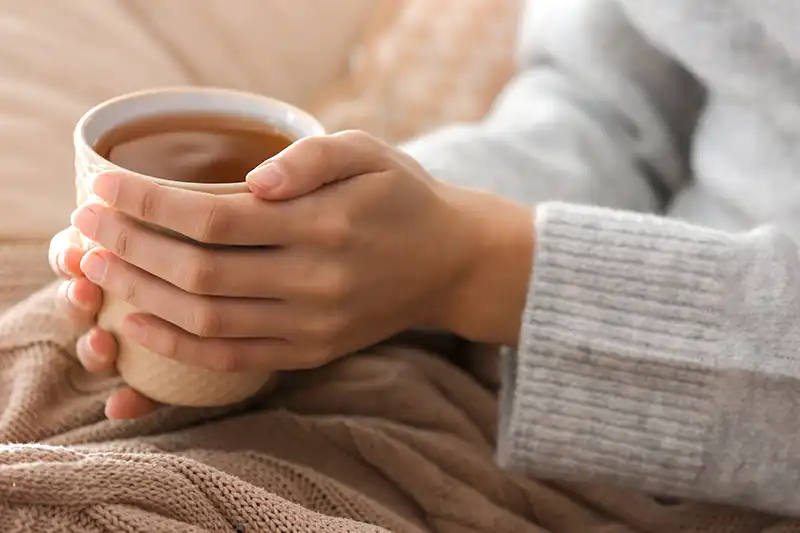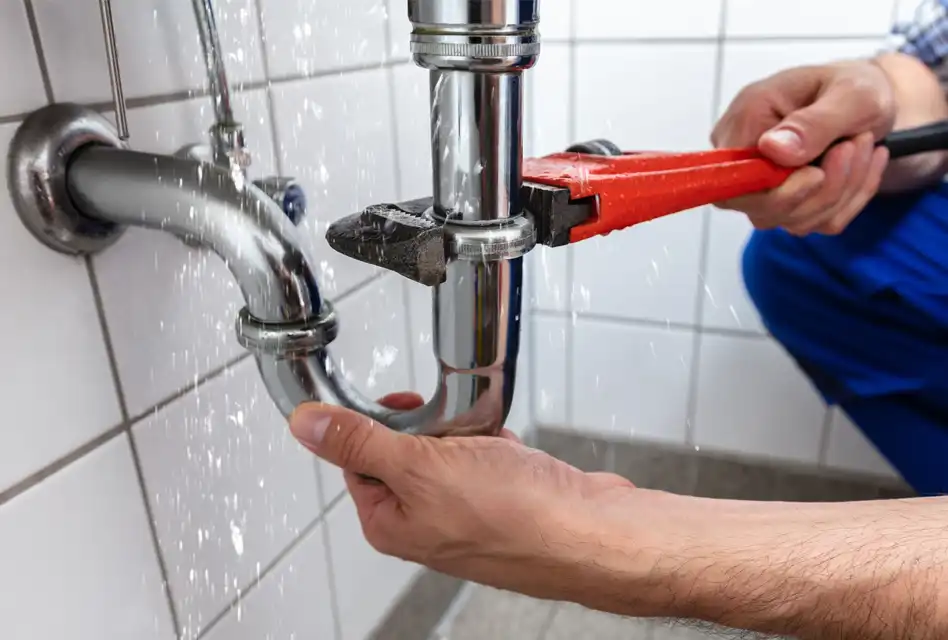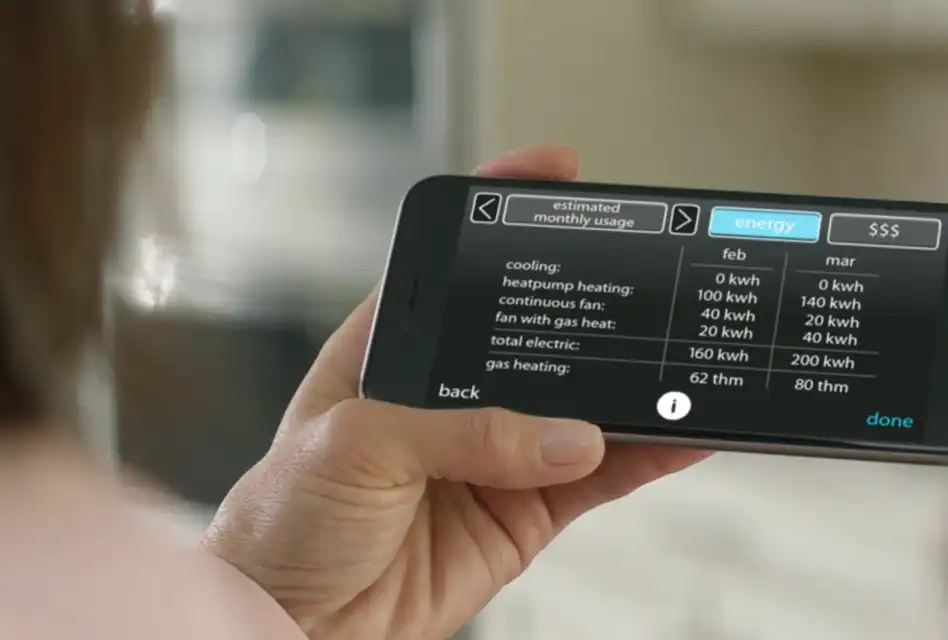Stay Healthy and More Comfy this Winter: How to Increase Humidity in your Pittsburgh Area Home
As the Pittsburgh region moves from fall to winter, the outside air becomes cooler and, inevitably, humidity levels begin to drop. In our attempts to stay warm and comfy, many of us crank up our furnaces which only worsens the dilemma. Why so? While the heating system boosts the indoor temperature, it fails to add any moisture to the air. This is because cold air can’t hold as much water vapor as warm air. The colder the air, the less water it will hold.
It’s proven that relative humidity levels in your home plummet during the wintertime. Any moisture is rapidly sucked into the air, even the moisture that evaporates from your body. It’s not uncommon for humidity levels to fall well below 30 percent.
Homes that use forced air heating even have a worse problem because such furnaces use combustion to create hot air, thus burning out most of the water vapor that existed in the first place. To make matters worse, when humidity levels dip, the ambient air feels cooler than a more humid environment and we turn up the heat even higher to compensate.
Such low humidity levels can give rise to a variety of issues, none of them beneficial, including dry or scratchy skin, bloody noses, chapped lips, itchy eyes, susceptibility to colds and respiratory illnesses, a distressing night’s sleep and even harm to your home’s woodwork.
For those of us who already can’t stand the cold weather, being hemmed in by dry indoor air at home can make the winter months that much more depressing.
Note: Relative humidity is the amount of water vapor present in air “expressed as a percentage of the amount needed for saturation at the same temperature.” As temperatures go up or down, the capacity of the air to hold water changes.
Before going any further, let’s review some of the health benefits of maintaining a favorable level of humidity in your home:
- Clears your sinuses which improves breathing.
- Reduces risks of infection. Viruses and bacteria do not reside comfortably in moist air. Studies have indicated that boosting humidity levels to 43 percent or above appreciably lessened the ability of airborne viruses to cause flu infections.
- Increases healing time from infections. Humidifiers will keep your nasal passages moist.
- Softer skin. Humidifiers help in keeping your skin moist, preventing dry, dull skin.
- Snoring relief. When humid air moisturizes the respiratory systems, snoring can decrease and actually disappear over time. This is due to the relaxing of the nasal passages and the natural drop off in irritating particles in the air.
- Sleep improvement. Humidity in your bedroom will help with dry throats.
- Helps relieve sore throats.
There are also several concerns in your household. As the heat travels through your HVAC system, it spins out dry air to warm your home, which can cause problems. Keep in mind that anything made of wood needs moisture to maintain its integrity. For example, over time, dry air can warp your wood furniture, cabinets, wood floors, woodworking, doors and more. Plus, higher humidity levels will protect paintings, photos and even a stamp collection from brittleness, discoloration, flaking and more. Even your walls aren’t immune to the detrimental effects of low humidity; paint and wallpaper will dry out as well, leading to chips or peels.
Humidity and the flu.
In 2013, the CDC did a study on the transmission of influenza as it related to humidity. They found that after an hour of humidity levels at 23 percent or less, 70 to 77 percent of the flu virus particles were still capable of causing an infection. But when humidity levels were raised to 43 percent, just 14 percent of the virus particles were transmittable. The project’s chief researcher stated, “The virus just falls apart at high humidity levels.”
Oh, lest we forget, dry air creates the perfect atmosphere for static electricity. That means almost every time you touch something like fabric or your doorknob, you’ll get a bit of a jolt.
So, after all this, what is the ideal humidity level for your home? Most experts tell us that a home should have a relative humidity of between 30 and 50 percent. Below this, you’ll likely face some of the problems we’ve described above.
Of course, you need to keep in mind that you don’t want to raise humidity in your home too high. Too much humidity can lead to mold and mildew, wet insulation, muggy conditions and sleep discomfort. One recommendation is that you acquire a digital hygrometer to monitor the relative humidity levels inside your home.
So, this begs the question, what’s the best way to add humidity your home and combat dry air?
 By far, the ideal remedy to manage dry indoor air is to use a large humidifier, even taking into consideration a whole house humidifier.
By far, the ideal remedy to manage dry indoor air is to use a large humidifier, even taking into consideration a whole house humidifier.
A humidifier, either a full room or whole-house model, will quickly boost the moisture in the air and help maintain a comfy level of humidity. However, they can be costly to purchase and running them day and night can send an already high winter energy bill soaring even higher.
That’s why we’ve written this blog to include alternative green and low-effort, low-cost strategies in our list of ways to help raise the humidity levels in your home. Some of these recommendations will only necessitate minor adjustments to your regular household routines.
Let’s begin.
Air-dry your clothes inside on a drying rack.
Every little bit of moisture helps, even when it comes from damp clothes that are placed on hangers to dry. When they are drying, the moisture they are retaining evaporates bit by bit. Take advantage of this process by drying your clothes in a room you want to keep humid. If you leave them to dry overnight, it will help humidify the room while you sleep, and you’ll have dry clothes to wear in the morning!
Cook on your stovetop.
Instead of using the microwave to heat up or baking in your oven, use your stovetop for home-cooked meals. Your oven will dry out the air even more, while the steam and vapors generated from the stove top will add to the moisture in the air. Also, your food will taste much better – at least, we think so.
Boil water on the stove.
Even if you’re not preparing a meal, simply boiling water on the stove will add humidity to your home as the water evaporates. Depending on the size of your home, it may not sufficiently circulate throughout the entire house. However, you can keep fans on low and keep your HVAC fan in the “on” position to boost circulation.
Keep the door open when you shower.
Yes, we all love our privacy when in the bathroom, but when you’re in the shower, it’s a good idea to leave the bathroom door ajar if you want to boost the humidity in your house. The moisture from the evaporating water in your hot shower will eventually make its way throughout your house.
Open the dishwasher door and air-dry your dishes.
Dishwashers use a lot of water and plenty of additional energy in the final drying cycle. After the last rinse cycle finishes, open the dishwasher door and let your dishes air dry instead. You’ll not only save energy but add much needed moisture to the air.
Place a bowl of water near heat sources.
Some people recommend placing an open bowl of water in the center of a room to help keep it humid but doing this will only produce a mediocre and barely noticeable increase in humidity. Rather, place that water near a heat source. This is one of the best methods to humidify a room. The heat will increase the rate of evaporation of the water, keeping your room cooler and more humid over time.

Forget the coffee, have a cup of tea.
Instead of coffee, make a pot of tea on the stove. The extra steam will help your air and the steam from the cup will help the skin on your face. Plus, who can’t a cup of tea help make better?
Be a little greener. Invest in some houseplants.
Even if you don’t possess the greenest of thumbs, houseplants are a fairly easy and attractive way to increase humidity levels. It’s called transpiration and it’s the process by which moisture evaporates from the leaves and stems of plants, adding much needed humidity to the air in your home. A dry home can be tough on houseplants as the battle for humidity wages on, so be sure to keep them well watered.
Use a water spray bottle.
Admittedly, it’s quite a low-tech solution, but it works. If your house is especially dry, walking around with a water spray bottle might help. Look for spray bottles that are capable of spraying a fine mist. One word of caution: Don’t spray too much as wet surfaces could help promote mold growth.
Okay, we’ve presented a variety of tricks of the trade in helping to create a comfortable humidity level in your home. And all of these will help! Still, the most effective way to humidify your house is by using a humidifier, either room size or whole-house unit.
What about those large room humidifiers?
If you decide to go with a room-size humidifier, just make sure you choose a model that is powerful enough to cover the room you need to add humidity. Many consumers tend to purchase small models that are incapable of humidifying sizable rooms and are left feeling dissatisfied with their purchase.
Check with the pros at Phillips for some recommendations on what to purchase. While pricey, this is always going to be a good option.
Win the fight against dry air and add humidity with a whole-house humidifier.
Let’s face it, to solve the problem once and for all, you might want to consider a whole-house humidifier, if your budget permits.
A whole-house humidifier works with your furnace to alter the humidity level of your entire home.
This gives you the most constant air quality and comfort level and letting you use your furnace more efficiently. Plus, it’s way more effective than a single-room humidifier and much more convenient, too.
Rather than having an ugly box cluttering up your living room and needing to fill it with water whenever the tank runs dry, a whole-house humidifier connects directly to your water supply and is mounted out of sight.
At Phillips, we have a variety of models to choose from and would be happy to walk you through your options. Once we’ve helped you find the right humidifier for your home, we’ll perform a clean, professional installation.
Let us know if you have any questions. Call us at 412-431-6563 or contact us here ›







